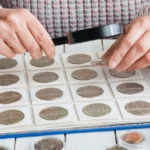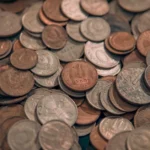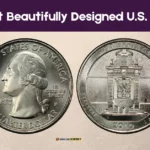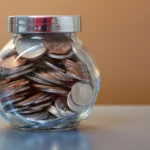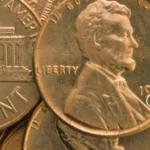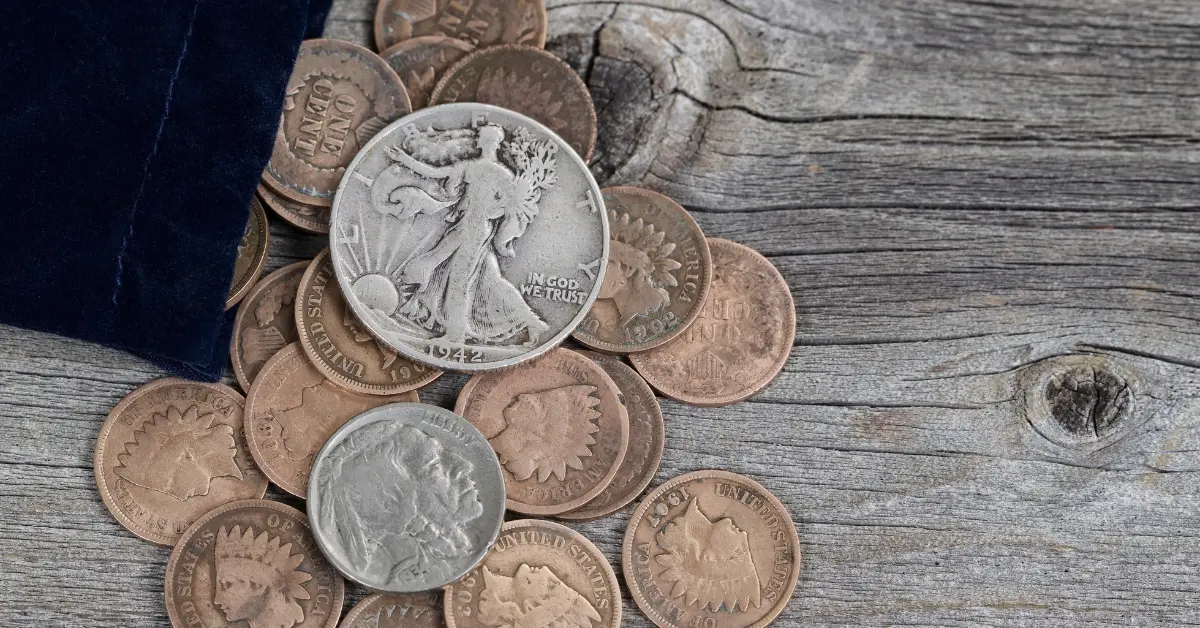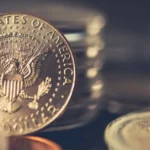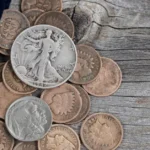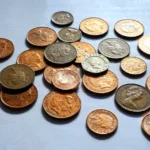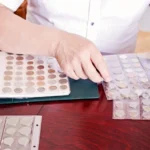The Rare US Coins are not just valuable they represent moments in time, reflecting the artistry, politics, and culture of their eras. Coins are more than just currency; they are tangible pieces of history that tell stories of America’s past. From their designs to their unique minting processes, rare coins capture the imagination of collectors, investors, and historians alike.
In this article, we’ll explore the stories behind these exceptional coins, highlighting what makes each one so rare and sought after. Whether it’s a coin struck in secret, created for diplomatic gifts, or produced in extremely limited quantities, these treasures reveal a fascinating side of U.S. history.
What Makes a Coin Rare?
Some coins are more valuable than others because they are rare. But what exactly makes a coin rare? Here are the main factors:
- Limited Mintage or Production Errors: Coins that were produced in small quantities are naturally harder to find. Sometimes, errors during production—like a misprint or design flaw—make a coin unique and even more valuable to collectors.
- Historical and Cultural Significance: Coins that mark important events or reflect a specific period in history hold special value. For example, a coin from the 1800s might tell a story about the economy, politics, or art of that time.
- Condition and Grading: A coin’s condition plays a huge role in determining its value. Coins without scratches or signs of wear are worth more. Professional grading services like PCGS (Professional Coin Grading Service) and NGC (Numismatic Guaranty Corporation) assign a grade to coins, making it easier for collectors to understand their quality.
The Role of Coin Collecting in History
Coin collecting has been a popular hobby for centuries. In the United States, it began to grow during the 19th century when people started recognizing the historical and artistic value of coins.
- How Coin Collecting Evolved in the U.S.: Early collectors focused on gathering coins that were no longer in circulation, such as Colonial and early U.S. coins. Over time, the hobby expanded to include rare and commemorative coins.
- Popularity Among Collectors and Investors: Today, rare coins attract not only hobbyists but also investors. Many people see them as a way to preserve wealth because rare coins tend to increase in value over time. This mix of history, artistry, and financial potential keeps coin collecting a popular activity.
The 10 Rare U.S. Coins Ever Minted
- 1933 Saint-Gaudens Double Eagle
- 1794 Flowing Hair Silver Dollar
- 1804 Draped Bust Silver Dollar
- 1913 Liberty Head Nickel
- 1894-S Barber Dime
- 1870-S Three Dollar Gold Piece
- 1787 Brasher Doubloon
- 1804 Eagle ($10 Gold Piece)
- 1861 Paquet Reverse Double Eagle
- 1915 Panama-Pacific $50 Gold Coin
1. 1933 Saint-Gaudens Double Eagle
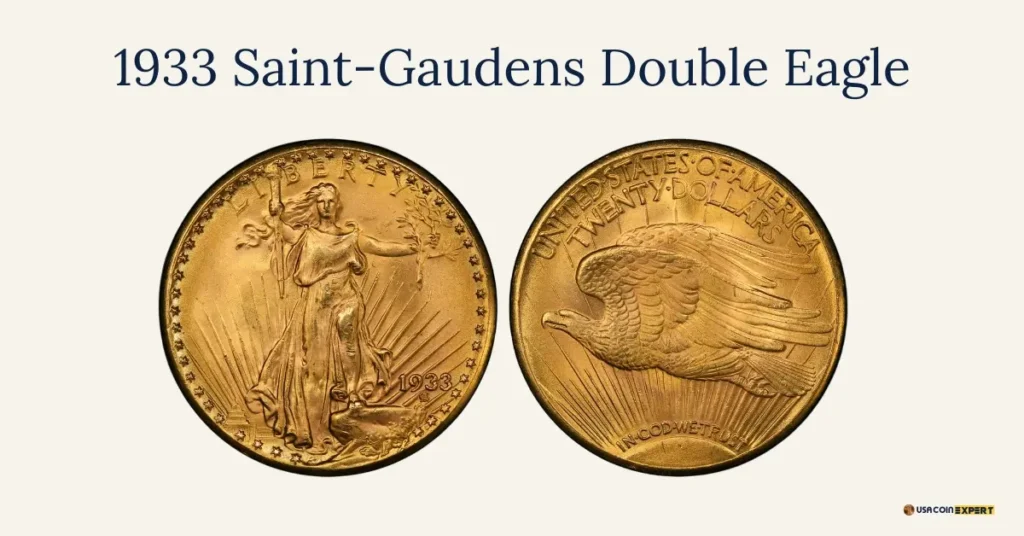
The 1933 Saint-Gaudens Double Eagle is one of the most famous and valuable coins in U.S. history. Its story is as fascinating as its design.
Background
This $20 gold coin was designed by the renowned sculptor Augustus Saint-Gaudens. It was part of an effort to beautify American coinage. Although 445,500 of these coins were minted, none were officially released into circulation. In 1933, the U.S. government halted the use of gold coins due to the Great Depression and the Gold Reserve Act. Most of these coins were melted down, and only a few survived.
Key Features
- Gold Composition: The coin is made of 90% gold and 10% copper, giving it a rich golden appearance.
- Unique Design: The obverse side features Lady Liberty holding a torch and olive branch, symbolizing freedom and peace. The reverse side shows a soaring eagle with rays of sunlight behind it.
- Melted by Order: The U.S. government ordered the destruction of these coins, adding to their rarity and mystique.
Market Value
The rarity and history of this coin have made it a collector’s dream. In 2021, a 1933 Saint-Gaudens Double Eagle set a world record when it sold for a staggering $18.9 million, making it the most expensive coin ever sold.
This coin’s story represents the intersection of art, history, and economics, making it a true treasure of the numismatic world.
2. 1794 Flowing Hair Silver Dollar – Rare US Coin
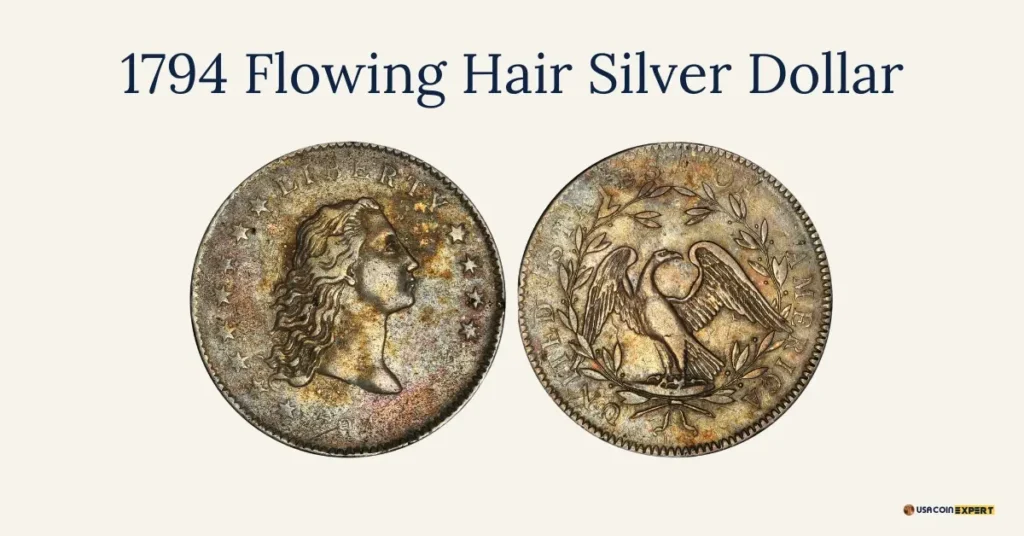
The 1794 Flowing Hair Silver Dollar holds a special place in American history as one of the first silver dollars ever minted by the United States. This coin is a cornerstone of numismatics and is highly prized by collectors.
Historical Importance
The 1794 Flowing Hair Silver Dollar is widely believed to be the very first silver dollar struck by the U.S. Mint. It was created as part of the nation’s early efforts to establish its own coinage system following independence. This coin marked a significant step in solidifying the young country’s monetary identity.
Key Features
- Flowing Hair Design: The obverse features Lady Liberty with flowing hair, symbolizing freedom and progress. The reverse depicts an eagle encircled by a wreath, a design that embodies the ideals of a fledgling nation.
- Historical Charm: The coin’s design reflects the artistic style and political aspirations of the late 18th century, making it a true relic of American history.
Market Value
The rarity, historical significance, and beauty of this coin have made it incredibly valuable. In 2013, a high-grade example of the 1794 Flowing Hair Silver Dollar sold for an astounding $10 million, solidifying its status as one of the most sought-after coins in the world.
This coin represents the beginning of U.S. silver coinage and remains a timeless symbol of American heritage.
3. 1804 Draped Bust Silver Dollar

The 1804 Draped Bust Silver Dollar is often referred to as the “King of American Coins,” and for good reason. Its rarity and unique history have made it one of the most coveted coins among collectors worldwide.
Historical Context
Despite its 1804 date, these silver dollars were not actually minted in that year. They were struck in the 1830s, decades after the original Draped Bust design was retired. These coins were specially produced as diplomatic gifts for foreign dignitaries, showcasing the elegance and craftsmanship of U.S. coinage at the time.
Key Features
- Draped Bust Design: The obverse features a portrait of Lady Liberty with a flowing gown and hair, surrounded by 13 stars representing the original colonies. The reverse showcases an eagle with a shield on its chest, holding an olive branch and arrows.
- “King of American Coins”: This title reflects its legendary status in numismatics. With only 15 known examples, the 1804 Draped Bust Silver Dollar is a treasure of extraordinary rarity and historical significance.
Market Value
The coin’s historical importance and scarcity make it incredibly valuable. In recent auctions, one example sold for $4.1 million, securing its place as a centerpiece in any elite coin collection.
The 1804 Draped Bust Silver Dollar is more than just a coin—it’s a piece of history, a work of art, and a testament to the diplomacy of a growing nation.
4. 1913 Liberty Head Nickel
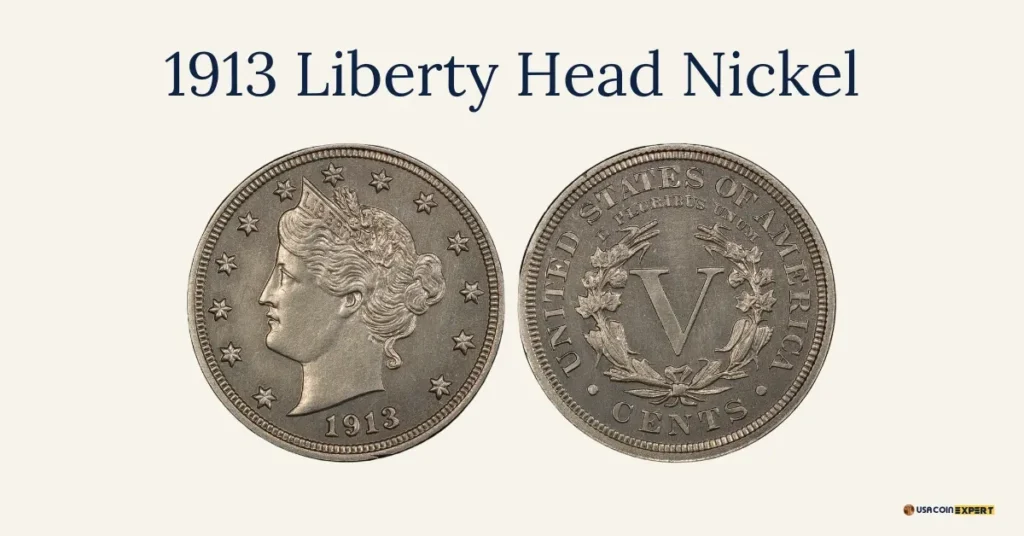
The 1913 Liberty Head Nickel is one of the most mysterious and coveted coins in U.S. history. Its unique story and extreme rarity make it a cornerstone of any prestigious coin collection.
Production
This coin was never authorized for production. Despite the official transition to the Buffalo Nickel design in 1913, five Liberty Head Nickels were secretly minted at the Philadelphia Mint. These unauthorized coins were not part of any official records, adding to their intrigue and desirability.
Unique Traits
- Nickel Composition: Made primarily of nickel with some copper, this coin retains its simple yet elegant metallic sheen.
- Liberty Head Design: The obverse features Lady Liberty wearing a coronet with the word “LIBERTY” inscribed. The reverse showcases the Roman numeral “V” representing the coin’s denomination of five cents.
Market Value
With only five known specimens, the 1913 Liberty Head Nickel is among the rarest coins ever produced. In 2010, one sold for $3.7 million, solidifying its place in numismatic history. The value of this coin continues to climb as collectors and investors vie for its ownership.
The 1913 Liberty Head Nickel is more than just a rare coin—it’s a symbol of intrigue, craftsmanship, and the allure of the unexpected in American coinage.
5. 1894-S Barber Dime
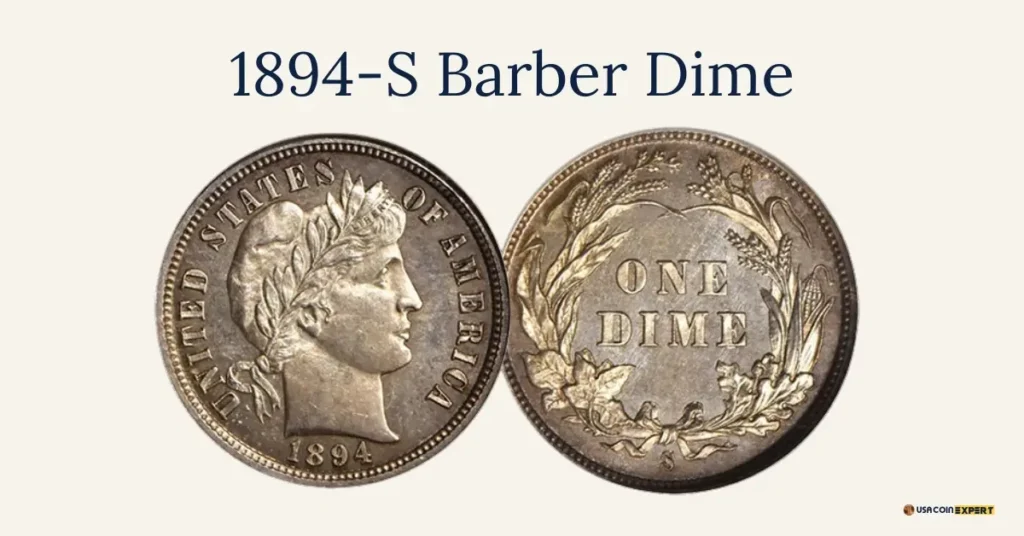
The 1894-S Barber Dime is one of the rarest dimes in American history. Its limited production and fascinating backstory make it a highly prized piece among collectors.
Rarity
Only 24 Barber Dimes were minted at the San Francisco Mint in 1894, making this coin exceptionally rare. Of these, just nine are known to exist today, making it one of the most elusive coins in U.S. numismatics.
Story
The reason for the coin’s tiny mintage is not entirely clear, but one popular theory is that these dimes were produced as special gifts for bankers and other influential figures. Another theory suggests they were struck to balance the mint’s books at the end of the fiscal year. Regardless of the true story, this small production run has made the 1894-S Barber Dime legendary.
Market Value
The scarcity and mystique surrounding this coin have driven its value sky-high. In 2007, one of the finest examples sold for $1.9 million. Its value continues to rise, making it a sought-after piece for serious collectors.
The 1894-S Barber Dime is a perfect blend of rarity, mystery, and historical significance, earning its spot as one of the most coveted coins ever minted in the United States.
Let me know the next coin you’d like to discuss!
6. 1870-S Three Dollar Gold Piece

The 1870-S Three Dollar Gold Piece is a legendary coin that stands out as one of the rarest in U.S. history. With only a single known specimen, it is truly one of a kind.
Rarity
This coin is unique—only one example is known to exist. It was struck at the San Francisco Mint in 1870 and was likely intended as a presentation piece to mark the opening of the mint’s new building. Its singular status makes it one of the most extraordinary coins ever produced.
Key Features
- Gold Composition: Like other three-dollar gold coins, this piece is made primarily of gold, giving it a rich and timeless appearance.
- “S” Mintmark: The coin bears the “S” mintmark, denoting its production at the San Francisco Mint.
- Distinct Design: The obverse features Lady Liberty wearing a headdress, while the reverse showcases a wreath of corn, wheat, and cotton encircling the coin’s denomination.
Market Value
The unique status of the 1870-S Three Dollar Gold Piece makes it priceless in the eyes of collectors. Its value is estimated at $6 million, though it could fetch even more if it were ever sold at auction.
This coin’s rarity and historical significance make it one of the most remarkable pieces in the world of numismatics, a treasure that tells the story of America’s rich minting history.
Let me know which coin you’d like to cover next!
7. 1787 Brasher Doubloon
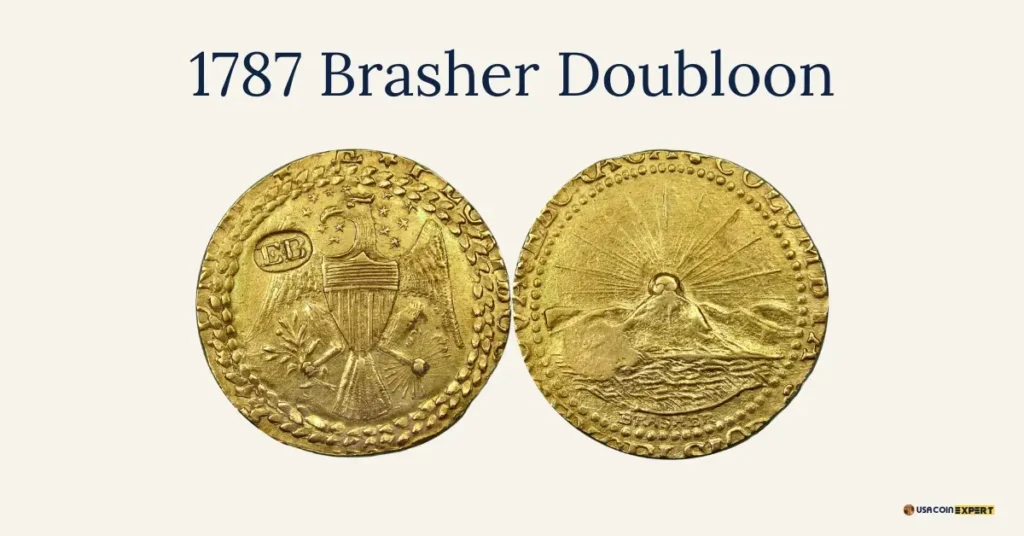
The 1787 Brasher Doubloon is one of the most famous coins in American history. Crafted by a private goldsmith, it holds immense historical value as a piece of pre-federal coinage.
Creator
This extraordinary coin was created by Ephraim Brasher, a New York City goldsmith and silversmith. Brasher was well-respected for his craftsmanship, and his initials “EB” appear prominently on the coin, marking his work.
Significance
The Brasher Doubloon was minted in 1787, before the United States had an official federal coinage system. At that time, states and private individuals often produced their own coins to meet the nation’s need for currency. This doubloon is one of the finest examples of early American coinage and represents a critical step in the country’s monetary evolution.
Key Features
- Gold Composition: The coin is made of high-purity gold, showcasing Brasher’s skill as a goldsmith.
- Unique Design: The obverse features a rising sun over a mountain with the state motto “Nova Eboraca” (New York). The reverse displays an eagle with a shield and an olive branch, symbols of strength and peace.
- EB Counterstamp: Brasher’s initials are stamped on the coin, adding to its authenticity and value.
Market Value
The rarity, craftsmanship, and historical importance of the Brasher Doubloon have made it incredibly valuable. In 2011, one example sold for $7.4 million, highlighting its status as one of the most expensive and sought-after coins in the world.
The 1787 Brasher Doubloon is not just a coin; it is a piece of early American history and a testament to the ingenuity and artistry of its time.
8. 1804 Eagle ($10 Gold Piece)
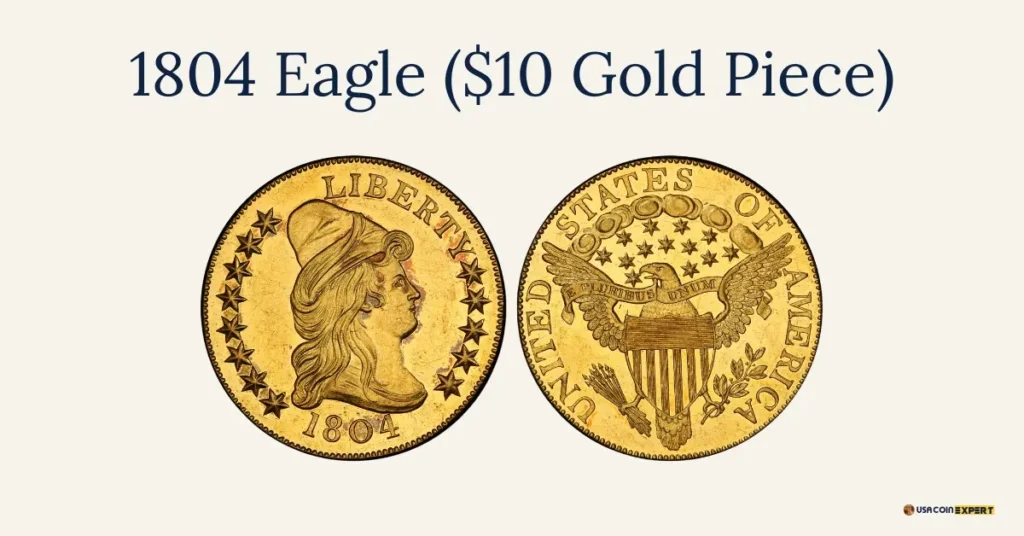
The 1804 Eagle is an extraordinary coin that has captured the imagination of collectors worldwide. With only a few known examples, its rarity and history make it one of the most valuable coins ever minted in the United States.
Rarity
Only four specimens of the 1804 Eagle are known to exist, making it one of the rarest coins in U.S. history. These coins were not meant for general circulation but were produced as special presentation pieces, likely for diplomatic purposes.
Key Features
- Gold Composition: Like other $10 gold pieces of the era, the 1804 Eagle is made of 90% gold, with a small percentage of copper added for durability.
- Elegant Design: The obverse features a bust of Lady Liberty with flowing hair, while the reverse shows a heraldic eagle holding arrows and an olive branch, symbols of strength and peace.
- Diplomatic Purpose: These coins were created as part of a set intended to impress foreign dignitaries and demonstrate the United States’ wealth and sophistication.
Market Value
The combination of rarity, historical importance, and exquisite design makes the 1804 Eagle an incredibly valuable coin. Examples have sold for over $2.5 million at auction, with their value continuing to rise as collectors seek this piece of American history.
The 1804 Eagle is not just a rare coin—it’s a symbol of the United States’ early efforts to establish itself on the world stage, making it a treasure in numismatic history.
9. 1861 Paquet Reverse Double Eagle
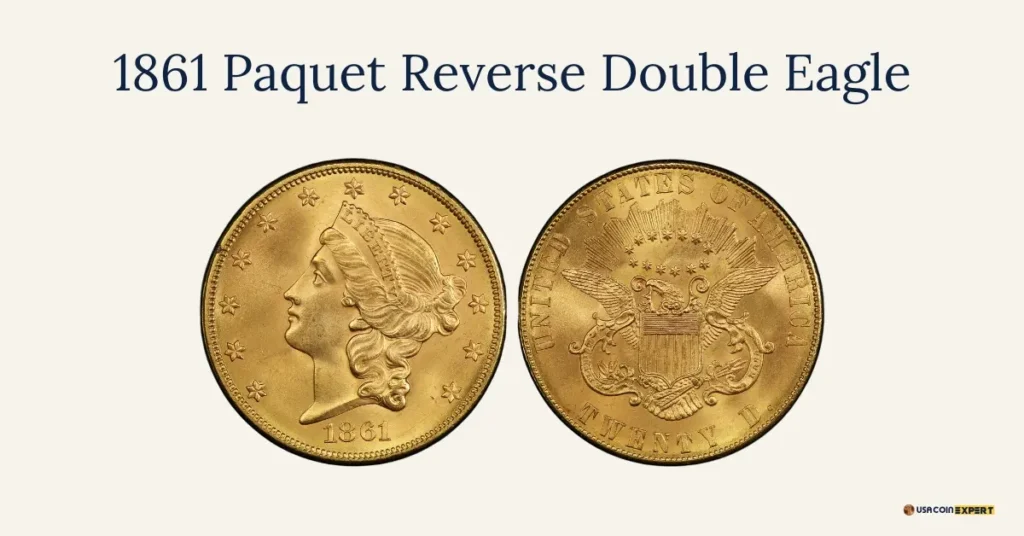
The 1861 Paquet Reverse Double Eagle is a coin of exceptional rarity and historical importance. Known for its unique design and limited mintage, it stands as one of the most coveted treasures in American numismatics.
Unique Trait
The coin features a distinct reverse design by Anthony Paquet, an assistant engraver at the U.S. Mint. Paquet simplified the lettering on the reverse to create a cleaner, more elegant look. However, this design was deemed unsuitable for widespread use due to concerns about striking issues, and the project was canceled. Only a few coins with this reverse design were ever struck.
Rarity
With just two known specimens, the 1861 Paquet Reverse Double Eagle is one of the rarest coins in U.S. history. These coins were struck at the Philadelphia Mint, and their scarcity has made them legendary among collectors.
Key Features
- Gold Composition: Like other $20 Double Eagles, the coin is made of 90% gold, giving it a stunning appearance.
- Reverse Design: The most notable feature is the unique reverse, where the lettering appears slimmer and more refined compared to the standard design.
- Historical Context: Produced at the dawn of the Civil War, the coin carries the weight of a turbulent time in American history.
Market Value
The rarity and distinctive design of this coin have driven its value to incredible heights. In 2021, one of the two known examples sold for $7.2 million, placing it among the most expensive coins ever auctioned.
The 1861 Paquet Reverse Double Eagle is more than just a coin—it is a masterpiece of design and a relic from one of the most significant periods in American history.
10. 1915 Panama-Pacific $50 Gold Coin
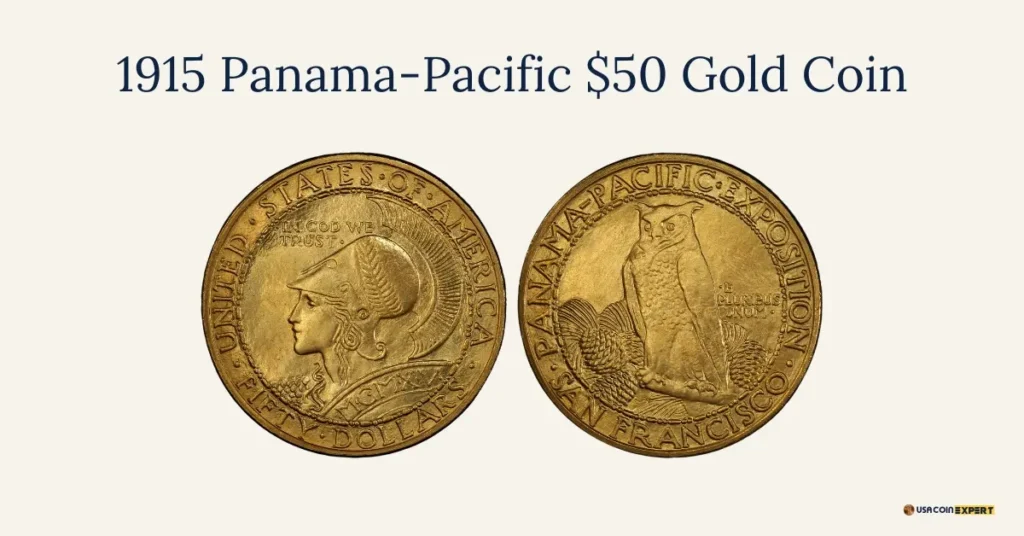
The 1915 Panama-Pacific $50 Gold Coin is a stunning piece of art and history. Created to commemorate a major event in U.S. history, this coin stands out for its high denomination and intricate design.
Historical Context
This coin was issued to celebrate the Panama-Pacific International Exposition held in San Francisco in 1915. The event marked the opening of the Panama Canal and showcased the city’s recovery from the devastating 1906 earthquake. The $50 gold coin was part of a special commemorative series created to honor this significant occasion.
Key Features
- High Face Value: At $50, this coin had the highest face value of any U.S. coin at the time, making it a symbol of prestige and importance.
- Artistic Design: The obverse features the Roman goddess Minerva, symbolizing wisdom and commerce, while the reverse showcases an owl perched on a branch, representing knowledge. The intricate details and artistic excellence set this coin apart from others of its era.
- Low Mintage: The coin was produced in very limited quantities, with versions struck in both round and octagonal shapes, adding to its uniqueness.
Market Value
The combination of historical significance, artistic beauty, and rarity has made this coin highly valuable. The 1915 Panama-Pacific $50 Gold Coin has fetched prices of over $5 million at auction, cementing its status as one of the most desirable commemorative coins in U.S. history.
This coin is a remarkable blend of artistry and history, representing a pivotal moment in America’s rise as a global power. It remains a prized possession for collectors and a testament to the craftsmanship of the U.S. Mint.
Why Rare Coins Matter
Rare coins are more than just pieces of metal; they are tiny windows into history, culture, and economics. Collecting rare coins is a passion shared by hobbyists, historians, and investors alike, and their significance goes far beyond their monetary value. Here are some key reasons why rare coins matter:
3.1 Historical and Cultural Value
Rare coins serve as tangible links to the past. Each coin tells a story about the era in which it was made:
- Historical Events: Coins commemorate important milestones, such as the opening of the Panama Canal (1915 Panama-Pacific $50 Gold Coin) or the early days of the U.S. Mint (1794 Flowing Hair Silver Dollar).
- Cultural Insights: Designs on coins often reflect the artistic styles, symbols, and values of the time, offering a glimpse into the culture of a bygone era.
- Economic History: Rare coins reveal how money systems evolved, from early privately minted coins like the 1787 Brasher Doubloon to the standardization of U.S. federal coinage.
3.2 Financial and Investment Potential
Rare coins are not just historical artifacts; they are also valuable assets:
- Long-Term Value: Coins like the 1933 Saint-Gaudens Double Eagle have appreciated significantly over time, with one example selling for $18.9 million in 2021.
- Portfolio Diversification: Rare coins provide an alternative investment option, especially during economic uncertainty, as they tend to retain value over the long term.
- Limited Supply: The rarity of these coins ensures that demand remains high, driving up their market value.
3.3 A Unique Hobby with Broad Appeal
Rare coins attract a diverse range of enthusiasts:
- For Collectors: The thrill of owning a piece of history and completing a collection is a major draw.
- For Historians: Coins are valuable primary sources that reveal details about trade, governance, and culture.
- For Investors: Rare coins are often seen as safe, tangible assets with the potential for significant returns.
3.4 Preserving Heritage
By collecting and studying rare coins, individuals play a role in preserving a nation’s history:
- Educational Tools: Rare coins can be used to teach younger generations about history, art, and economics.
- Legacy: Rare coins often become treasured family heirlooms, passed down through generations.
Collecting Rare Coins
Collecting rare coins is a rewarding journey that combines history, art, and the thrill of the hunt. Whether you’re a beginner or an experienced collector, understanding the basics can enhance your appreciation and help you build a meaningful collection. Here’s a guide to getting started and making the most of this fascinating hobby.
4.1 How to Start Collecting Rare Coins
Starting a rare coin collection may seem overwhelming, but with a little guidance, anyone can enjoy this exciting pursuit:
- Educate Yourself: Learn about coins through books, online resources, and collector communities. Understanding terms like “mintage,” “grading,” and “condition” is essential.
- Start Small: Begin with affordable coins that interest you, such as those from specific time periods or with unique designs.
- Set a Focus: Decide on a theme for your collection, like U.S. coins, historical commemoratives, or coins from specific eras.
4.2 Where to Find Rare Coins
Knowing where to look is key to building a high-quality collection:
- Coin Dealers: Reputable dealers can help you find rare coins and provide insights into their authenticity and value.
- Auctions: Both in-person and online auctions, such as those hosted by Heritage Auctions or Stack’s Bowers, are excellent places to find rare and valuable coins.
- Coin Shows: Attending coin shows allows you to meet dealers and collectors, inspect coins in person, and discover unique pieces.
- Online Marketplaces: Websites like eBay or specialized coin forums can be good sources, but be cautious about authenticity and seller reputations.
4.3 Authentication and Grading
Ensuring your coins are genuine and accurately graded is critical:
- Professional Grading Services: Organizations like PCGS (Professional Coin Grading Service) and NGC (Numismatic Guaranty Corporation) provide reliable grading and authentication.
- Inspect for Counterfeits: Learn to identify counterfeit coins by studying genuine examples and consulting experts.
- Certification: Look for coins that come with certificates of authenticity and professional grading.
4.4 Protecting Your Collection
Proper care is essential to maintain the value and condition of your coins:
- Storage: Use coin holders, albums, or airtight containers to protect coins from scratches, humidity, and tarnish.
- Handling: Always handle coins by their edges and avoid touching the surfaces to prevent oils and dirt from damaging them.
- Insurance: Consider insuring your collection to protect against theft, loss, or damage.
4.5 Benefits of Joining the Collector Community
Being part of a community can greatly enhance your collecting experience:
- Networking: Connect with fellow collectors to exchange knowledge, trade coins, and discover new opportunities.
- Education: Join clubs like the American Numismatic Association (ANA) to access resources, attend events, and stay informed about industry trends.
- Mentorship: Experienced collectors can guide you in making informed decisions and avoiding common pitfalls.
Resources for Collectors
Building a successful rare coin collection requires the right resources to guide your journey. From finding trustworthy dealers to staying informed about market trends, having access to reliable tools and communities can make all the difference. Here’s a list of essential resources for collectors to help you enhance your knowledge and grow your collection.
5.1 Trusted Auction Houses
Auction houses are some of the best places to find and purchase rare coins. They provide opportunities to acquire high-quality and authenticated pieces:
- Heritage Auctions: One of the largest auction houses specializing in rare coins and collectibles. Known for its extensive catalog and transparent process.
- Stack’s Bowers Galleries: A premier auction house offering a wide variety of rare coins, from ancient to modern.
- GreatCollections: An online platform offering a mix of rare coins and more affordable options for collectors of all levels.
5.2 Reputable Coin Dealers
Working with reputable dealers is crucial for acquiring authentic coins and avoiding counterfeits:
- Professional Numismatists Guild (PNG): An organization of vetted coin dealers who adhere to strict ethical standards.
- American Numismatic Association (ANA) Dealer Directory: A directory of trusted dealers who are members of the ANA.
- Local Coin Shops: Building a relationship with a trusted local dealer can provide personalized advice and help you find hidden gems.
5.3 Online Communities and Forums
Engaging with fellow collectors online can provide valuable insights and support:
- Collecting Forums: Websites like CoinTalk and Collectors Universe offer spaces to ask questions, share finds, and discuss trends with other enthusiasts.
- Social Media Groups: Facebook and Reddit have active coin-collecting communities where you can connect with others and learn from their experiences.
- YouTube Channels: Many collectors and numismatists share tips, reviews, and historical insights on coins through educational videos.
5.4 Tools and References
Having access to the right tools and references can make your collecting journey smoother:
- Coin Grading Services: Use services like PCGS and NGC for professional grading and authentication.
- Price Guides: The Red Book (A Guide Book of United States Coins) is an essential resource for understanding coin values and history.
- Apps and Software: Tools like Numista and PCGS CoinFacts provide detailed information about coins and their market values.
5.5 Organizations and Clubs
Joining collector organizations can help you stay informed and expand your network:
- American Numismatic Association (ANA): Offers educational resources, events, and a community of collectors.
- Coin Clubs: Local and regional coin clubs provide opportunities to meet fellow collectors, attend events, and learn from experts.
- Specialized Societies: Groups like the Early American Coppers (EAC) focus on specific types of coins and cater to niche interests.
Conclusion
The journey of collecting rare coins becomes much more rewarding with access to the right resources. Trusted auction houses, reputable dealers, and active communities can help you build a valuable and meaningful collection. Whether you’re seeking to expand your knowledge, find rare pieces, or connect with others who share your passion, these resources will serve as valuable tools in your collecting adventure.
Frequently Asked Questions
1. What makes a coin rare?
A coin is considered rare due to factors like limited mintage, production errors, historical significance, and its condition. Coins that were produced in small quantities or feature unique designs are often the most sought-after.
2. How do I determine the value of a rare coin?
The value of a rare coin depends on its rarity, condition, historical importance, and market demand. Professional grading services like PCGS (Professional Coin Grading Service) and NGC (Numismatic Guaranty Corporation) can provide an accurate assessment.
3. What is the best way to start a coin collection?
Educating yourself through books, online resources, and forums.
Choosing a focus, such as a specific era, design, or type of coin.
Purchasing from reputable dealers or auction houses to ensure authenticity.
4. Where can I buy rare coins?
Trusted auction houses like Heritage Auctions and Stack’s Bowers.
Reputable coin dealers listed in the American Numismatic Association (ANA) directory.
Online platforms like GreatCollections, but ensure the seller is reliable.
5. How can I protect my coin collection?
To protect your collection:
Store coins in coin holders, albums, or airtight containers to prevent damage.
Avoid handling coins with bare hands; use gloves to preserve their condition.
Keep your collection in a cool, dry place and consider insuring it for added security.
6. How can I tell if a coin is authentic?
To verify a coin’s authenticity:
Use professional grading services like PCGS or NGC.
Look for certification and grading labels.
Learn to identify common counterfeit traits by studying genuine examples and consulting experts.
7. Are rare coins a good investment?
Rare coins can be a good investment as they often increase in value over time due to their rarity and demand. However, like any investment, they carry risks and should be approached with careful research.
8. What is the most valuable U.S. coin?
The 1933 Saint-Gaudens Double Eagle is the most valuable U.S. coin ever sold, fetching $18.9 million at auction in 2021.
9. How can I learn more about rare coins?
You can learn more through:
Books like The Red Book (A Guide Book of United States Coins).
Joining organizations like the American Numismatic Association (ANA).
Attending coin shows, auctions, and local coin clubs.
10. What are some common mistakes beginners make in coin collecting?
Some common mistakes include:
Buying coins without proper research.
Handling coins improperly, leading to damage.
Falling for counterfeit or overpriced coins from untrustworthy sellers.
Ignoring professional grading and certification.
11. Can I sell my rare coins online?
Yes, you can sell rare coins online through platforms like GreatCollections, eBay, or through reputable auction houses. Ensure you provide high-quality images and detailed descriptions for potential buyers.
12. What is a commemorative coin?
A commemorative coin is issued to honor a specific event, person, or place. These coins often have unique designs and limited mintages, making them attractive to collectors.



